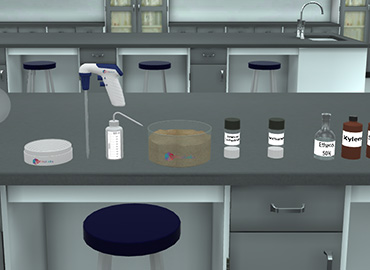





2.5M+
Active Users Worldwide
80%
Improved Learning Retention
60%
Reduction in Laboratory Costs
Synthesis of six membered cyclic organic compounds through Diels Alder reaction organic chemistry lab procedures.
Electrocyclic reaction where 4 π-electrons from the conjugated diene (anthracene) and 2 π-electrons from the dienophile (maleic anhydride) are involved in the reaction in the presence of xylene as a solvent at a temperature of 350 ⁰C. The driving force is the formation of new σ-bonds as they are energetically more stable than the π-bonds in this Diels Alder experiment setup.
Become proficient at running organic chemical reactions.

Figure 1. Schematic diagram for Diels Alder Reaction




